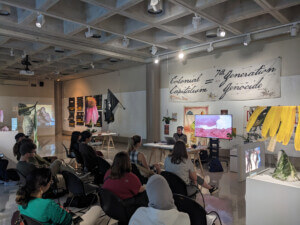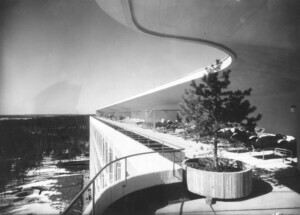It was the first time Malaz Elgemiabby had attended the annual conference of the National Organization of Minority Architects (NOMA). But it turned out to be like going back to her childhood in Sudan, being surrounded by architects, designers, and builders who looked like her, and who cared as deeply as she does about community participation in design.
“In Sudan, architects are women,” Elgemiabby told AN. “So I used to build buildings when I was a kid. As women [in Sudan] your responsibility is to build the houses, to design, to assess the needs of the community.”
Elgemiabby went to architecture school at London Metropolitan University, seeking out its program for its emphasis on community participation in design. She first went to work in the Middle East, where she also earned a master’s degree in interdisciplinary design from the Qatar campus of Virginia Commonwealth University. She moved to Cleveland three years ago to work as an architect. After doing some projects that she’s quite proud of in the city, Elgemiabby launched her own firm, ELMALAZ, earlier this year in Cleveland.
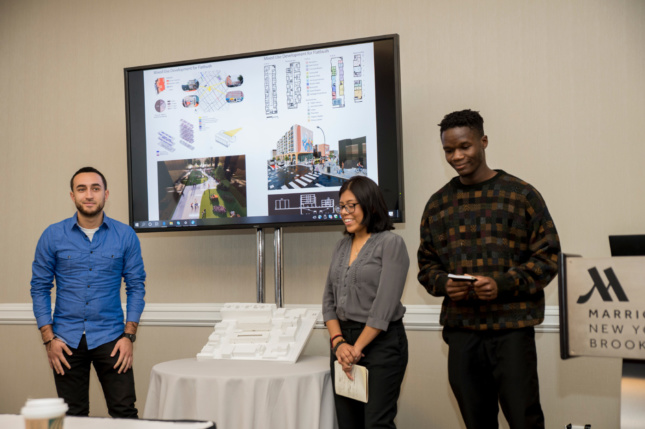
But it’s also been a bit lonely at times, being an architect on a mission to bring communities into the design process.
“[In Cleveland] I’m one of the few who are advocating for this type of approach to architecture,” Elgemiabby said. “I come [to this year’s NOMA conference] and I find not only a lot of black and brown architects, but I also find people who are excited about the same mission. This was really great. It’s always nice to grow your tribe.”
Growing that tribe, of course, has been NOMA’s goal all along, ever since twelve African American architects founded the organization during the 1971 AIA National Convention in Detroit. This year’s annual conference, in Brooklyn, attracted a record attendance of over a thousand participants for five days of programming, including service outings, seminars, keynote lectures, student design contests, and the usual networking and socializing.
Overall, NOMA membership has grown 30 percent in 2019, under the leadership of NOMA president and HOK principal Kimberly Dowdell. The organization now has more than 1,400 members, organized under 30 professional chapters and 75 student chapters across the country.
Under Dowdell, this year NOMA established a new tiered corporate membership program for large and small firms that wish to support the organization—and also gain access to discounted consulting from NOMA’s curated pool of experts in diversity, equity, and inclusion. Dubbed the “President’s Circle,” founding members include AIA, NCARB, Enterprise Community Partners, Cuningham Group, Shepley Bulfinch, Gensler, HOK, and Perkins & Will.
But growth and progress for NOMA still come in the context of the Sisyphean task of making architecture more representative of the communities it serves. Out of 115,000 or so architects licensed in the U.S., only an estimated 2,299 are black. That context was made even more somber this year with the loss of one of NOMA’s giants, Phil Freelon, who passed away in July. NOMA renamed its annual professional design awards in his honor.
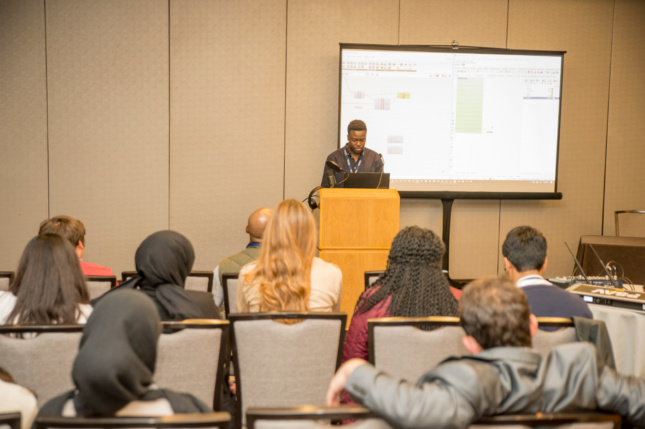
Zena Howard worked with Phil Freelon for well over a decade. So it was fitting that this year’s NOMA conference programming included her delivery of the J. Max Bond Lecture, organized annually by the New York Chapter of NOMA and the AIANY Diversity and Inclusion Committee. Howard’s talk focused on the notion of “Remembrance Design,” which emerged over the past few years through her work with Freelon and others.
Now principal and managing director of the North Carolina office at Perkins+Will, Howard used some of her firm’s recent projects to illustrate remembrance design in action. The examples varied in scale and scope from the 1.1-acre Sycamore Hill Gateway Plaza in Greenville, North Carolina, to a 30-acre design process covering Miami’s Overtown neighborhood, to a 1.3-mile “linear museum” along the Crenshaw Boulevard transit corridor in Los Angeles. All were historically black neighborhoods, typically scarred by racially-discriminatory redlining and later the era of urban renewal and the construction of the interstate highway system.
In short, remembrance design is a way of using architectural discovery as a healing process to unearth, unpack and honor painful histories in neighborhoods that have traditionally been disinvested and neglected—or worse yet, bulldozed and paved over—by the worlds of architecture, urban planning, and real estate.
“It’s about engaging people who have historically not been engaged,” Howard said. “First engaging with these communities, there’s a lot of hurt. I once thought to myself you have to go get a psychology degree or something. It’s difficult sometimes to hear. But over time, you realize that the pain a lot of people have, they have to release that, you sort of have to provide an outlet for it. A lot of it at first is just listening.”
Howard spoke about how that deep listening process turns architecture into more than just a design process; it elevates architecture into a healing process. It can even make the architect’s job a little easier in the end. Once you move past the pain, Howard said, some participants from the community will actually feel inspired enough to start sketching themselves.
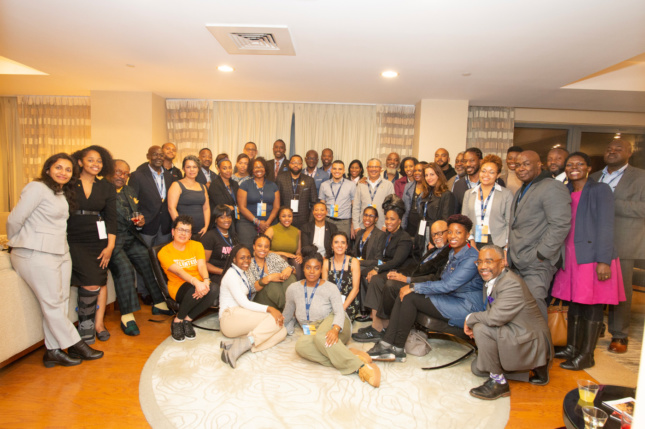
“Even if you can’t get people really to talk about something, they can sketch something, they can draw,” Howard said. “It becomes therapeutic in a lot of ways. Once you get passed that threshold you really start moving fast towards design solutions that they’re a part of.”
That depth of community engagement resonated with many NOMA members, from Elgemiabby to NOMA National Board Member and SOM senior urban designer Tiara Hughes, whose childhood neighborhood in St. Louis is now a baseball field.
“I understand what [Howard] was referring to that there’s trauma and feelings and emotions that we have to deal with collectively as a group,” Hughes told AN.
And it certainly resonated with Dowdell, who was partly inspired to become an architect by growing up among vacant homes and boarded-up commercial corridors in Detroit.
“The kind of engagement that Zena [Howard] and her team has done or is doing, I think that’s probably standard practice for a lot of architects here [at the conference],” Dowdell said.
Dowdell is hopeful that more and more of those kinds of projects will come up as the U.S. and especially its cities become more and more diverse. The U.S. Census Bureau predicts people of color will become a majority in the U.S. by 2043. Dowdell views NOMA’s work as preparing architecture for that future.
“We all have to be more conscious of the fact that more and more clients will be people of color, more and more government officials—people with more power,” she said.
Of course, in bringing good design to more diverse places that have historically been neglected or harmed by earlier periods of development, the conversation naturally turns to how good design can risk putting new pressure on market conditions, pushing up property taxes or rents and pushing out the very residents who participate in these design processes. Howard brought up the example of Hogan’s Alley in Vancouver, British Columbia, as one where the residents and elected officials are looking to a community land trust as a policy intervention to protect those residents the project had in mind as end-users.
“The thing [Howard] also mentioned, rightly so, was the thing that design can’t solve: the political and economic conditions that need to be grappled with to effectively prevent gentrification and the negative effects of gentrification,” Dowdell said. “I think reinvestment is fine, but I think when it starts to displace people who have had a stake in that community for years, decades, generations, that’s going to be problematic.”









